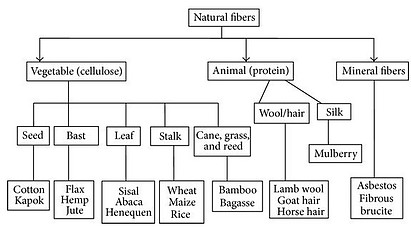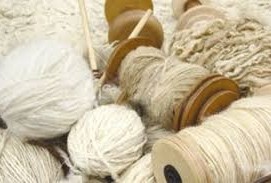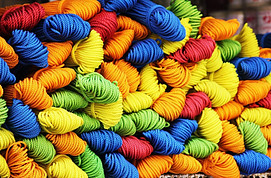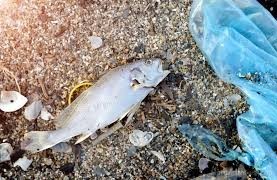Synthetic fibers vs natural fibers – which one is better to wear? Synthetic fibers are made by humans with chemical synthesis through a process of polymerization. They are different to natural fibers that are derived from living organisms with little or no chemical changes. Synthetic fibers were first developed to try to replace natural fibers as the demand for textiles for clothing was exceeding the supply.
Introduction to Synthetic Fibers
The first synthetic fibers were produced in the late nineteenth century / early twentieth century. Man made or synthetic fibers are manufactured from polymer-based materials such as polyamide (nylon), polyester, acrylic and other spun thermoplastics.
Man made or synthetic fibers are manufactured from polymer-based materials such as polyamide (nylon), polyester, acrylic and other spun thermoplastics.
Compounds used to make synthetic fibers come from petroleum based chemicals or petrochemicals. Viscose comes from pine trees or petrochemicals, while nylon, acrylic and polyester come from coal and oil.
We are surrounded by synthetic fibers in modern day life. They are used everywhere in our homes, in our clothing and bedding and even office and commercial environment.
It is used for stuffing in sofas, beds, pillows and cushions, sound absorbents, filters in heating and air conditioning systems and many more. It is used for surgical procedures, reinforcement materials, automotive tyres and even concrete.
In this article we will mainly focus on the use of synthetic fibers in textile production. But we will also look at the advantages and disadvantages of synthetic fibers vs natural fibers. Semi-synthetic fibers are those that are manufactured from plant-derived cellulose like rayon and viscose (which is manufactured from wood pulp).
The most common synthetic fibers that are used in the textile industry are nylon, polyester, acrylic, Lycra and spandex.
Methods of Manufacturing Synthetic Fibers
Generally synthetic fibers are made by extruding fiber-forming material through spinnerets into air and water so that a thread is formed. The fibers come in long lengths. Fiber spinning is divided into 2 processes:  melt-spinning and solvent spinning. The most common method of producing synthetic fibers is through a process of melt-spinning.
melt-spinning and solvent spinning. The most common method of producing synthetic fibers is through a process of melt-spinning.
- The first step is to heat the polymers until they start to melt.
- Fibers must then be drawn out the melt with tweezers as quickly as possible.
- The next step is to align the molecules in a parallel arrangement, which brings the fibers closer together and allows them to orient and crystallize.
There are many variations of melt-spinning with nylon, polyester and polypropylene being the most common synthetic fibers that are produced using the process of melt-spinning.
In solvent spinning the polymer is dissolved in a solvent to make spinnable dope that is extruded into fibers. The solvent is then removed afterwards. Examples of solvent spun fibers are Kevlar, Lyocell, rayon and Lycra. Some polymers such as polyethylene are both melt spun and solvent spun.
Another method is heat-setting whereby heat is used to permeate the shape or dimensions of fabrics made from heat-sensitive fibers.
Non-woven fabrics are formed through extrusion and can be manufactured at a low cost. These would be used in the manufacturing of disposable items such as female hygiene products, wipes and disposable diapers (or nappies).
What is in Synthetic Fibers?
- Many hazardous chemicals are used to manufacture synthetic fibers. Synthetic fibers that are produced from petroleum, like nylon and polyester, are not biodegradable. More than 20% of industrial water pollution is caused by the synthetic fiber industry. The contaminated water is pumped into rivers, seas and oceans and ends up killing aquatic life.
 During the manufacturing of polyester, two highly toxic chemicals, namely dihydric alcohol and terephthalic acid, are used. Neither are completely removed from the fiber and can enter the body through wet skin, causing dermatitis and respiratory diseases.
During the manufacturing of polyester, two highly toxic chemicals, namely dihydric alcohol and terephthalic acid, are used. Neither are completely removed from the fiber and can enter the body through wet skin, causing dermatitis and respiratory diseases.- Carbon disulfide, sulfuric acid, acetone, ammonia and caustic soda are used when rayon is manufactured. These chemicals can cause muscle pain, nausea, headaches and insomnia.
- When acrylic fiber is made, acrylontrile is used. Even in small doses it is toxic and can be carcinogenic.
- Nylon relies on petroleum for the manufacturing. It goes through many chemical treatments during the manufacturing using caustic soda, sulphuric acid and formaldehyde. Chloroform, pentane, limonene and terpineol are used during the bleaching and softening processes. Many of these toxins remain in the fabric.
Hazardous chemicals used in the making of synthetic fibers pose a big risk to humans and the environment. Increasingly though, synthetic fibers are recycled, and is perfect for making swimwear. These are two swimwear brands that are using recycled plastic waste to produce sustainable swimwear.
- Laara Swim, a Danish company, is one of the 100% sustainable designer bikinis brands. They use fabric made from regenerated plastic waste that is found in the North sea, Adriatic sea and Mediterranean.
- Vitamin A produce sustainably made swimwear and leisure wear clothing using recycled nylon and natural fibers.
Advantages of Natural Fibers
Natural fibers are derived from sustainable and renewable sources and have several advantages associated with them. 
- Most natural fibers are bio-degradable and fully recyclable.
- They have natural anti-bacterial properties, resist mildew and block UV radiation.
- Natural fibers are naturally hypoallergenic, making them ideal for people with sensitive skin or those prone to allergies.
 This makes it ideal to be used in clothing and textiles for newborns and babies.
This makes it ideal to be used in clothing and textiles for newborns and babies. - Natural fibers are breathable and heat responsive while also great insulators. Fabrics like wool, cashmere, silk and bamboo traps air between the micro-holes of the fabrics. This trapped air is then used as an insulator to generate warmth in the winter and coolness in the summer.
- Some natural fibers can be grown organically. It might be more expensive to produce and purchase, but it ensures that no harmful chemicals and pesticides are used in it’s production.
- Most natural fibers have a moisture wicking ability which allows ventilation through the fabric. This means dampness is drawn away from the skin, leaving you feeling dry. This high absorption quality in natural fibers is a very big plus. It is particularly important during the hot months, when fabrics such as cotton and linen will help keep you cool and comfortable.
The only disadvantage of natural fibers is that they are not as strong as synthetic fibers.
Advantages of Synthetic Fibers.
- Synthetic fibers are more durable than natural fibers as synthetic fibers are mostly unaffected by living organisms and microorganisms. Sunlight and ultraviolet light will degrade them over a period of time.
- Functions like stretching and waterproofing is possible with synthetic fibers.
- Synthetic fibers are more water and stain resistant than natural fibers.
Some people claim that the carbon footprint of synthetic fiber production is smaller than that of cotton or wool, although I personally disagree with that.
Disadvantages of Synthetic Fibers:
The disadvantages of synthetic fibers far outweigh the advantages.
- Synthetic fibers have poor insulation as the mono-fibers do not have air pockets that will trap air like cotton and other natural fibers.
- It is not skin friendly and uncomfortable to wear.
- Some people are allergic to synthetic fibers. Textile dermatitis is a skin reaction causing redness, itchiness and inflammation after the skin has been in contact with synthetic fibers.
- Synthetic fibers are not biodegradable.
- Synthetics stick to the body when it is hot and sweaty as it doesn’t absorb moisture.
- It burns more easily than natural fibers, making it a hazard in the vicinity of heat sources or flames from fireplaces.
- It is susceptible to heat damage.

- Synthetic fibers melt easily.
- Hot washing and ironing damage synthetic fibers.
- More electrostatic charge is generated when rubbing than with natural fibers.
- Synthetic fibers cause micro plastic pollution when washed.
- A big disadvantage of synthetic fibers is that they are hydrophobic. This affects the processing of the fibers as the surfaces are difficult to wet. Hydrophobic material hinders the penetration of water into the pores of the fabric, thus making processes like dyeing difficult.
Synthetic Fibers vs Natural Fibers – which one will you choose?
What does it feel like to cover your body with plastic? Wearing clothes made from synthetic fibers is like wrapping your body in plastic. To me it is uncomfortable. So when it comes to synthetic fibers vs natural fibers, I would always choose natural fibers for my clothing and my home.
Please leave any questions or comments below and’ll get back to you.

Hi, i am a student at a school. I am looking for information about corn-starch plastic. Could anyone give me information about what it is, how to make it, and whats in it.
Hi there, you might find this article on What is Corn Starch Plastic helpful. You might also find this post on What is Fabric made with Corn, interesting. All the best.
Is the insertion link acceptable on your website?
It depends on the website that the link is leading to.
Clothing stores used to have cotton clothing options but now even cotton clothing has synthetics mixed in and it’s not as attractive, not as breathable, and frankly it cheapens the clothing. Most clothing stores are full of synthetics. It’s really hard to find a cotton shirt or sweater nowadays. I developed an allergy to acrylic due to the way it’s manufactured using coal tar.
Most clothing stores are unfortunately full of synthetic clothing. If you shop with these organic, sustainable and eco friendly brands, you will find many 100% cotton items. These are all brands that are part of what is slow fashion industry, to help you with your new slow fashion evolution.
Allbirds produce sustainable footwear and apparel using only natural, sustainable fabrics and recycled materials.
Thought is an all-natural company that produces timeless fashion using organic cotton and sustainable fabrics.
Laara Swim, a Danish company, is one of the 100% sustainable designer bikinis brands. They use fabric made from regenerated plastic waste that is found in the North sea, Adriatic sea and Mediterranean.
Vitamin A produces sustainably made swimwear and leisure wear clothing using recycled nylon and natural fibers.
Nudie Jeans is an environmentally conscious Swedish fashion brand that uses organic cotton to produce sustainable denim jeans.
Beaumont Organics is a British based Organic and Ethical clothing company that was started in 2008. They create contemporary conscious clothing for the modern woman.
Soul Flower is an Organic Boho Hippy Clothing Range that is based in Minneapolis, USA. You can respect our planet while at the same time expressing your bohemian spirit.
PrAna is an ethical North American company that only uses sustainable fabrics and ethical practices. They do a full range of yoga, climbing, hiking, traveling and active wear for men and women.
Coalatree Organics designs eco-minded apparel and gear for exploring and enjoying the great outdoors.
Asket produces ethical sustainable underwear, yoga and outer clothing, using organic cotton and recycled material.s.
I hope it helps
Nice Article 👍👍👌 👌👍
Thank you, you are welcome
this is a challenging question, what is ultimately better … of course, all the drawbacks that are in the article to the synthetic fiber are true and sufficient for the synthetics to be damned, but I personally have a problem with sheep wool … as a man what is interested in animal rights and how unethical they are often treated … I am definitely for natural fibers such as bamboo, I see it as the best option
Bamboo is a very good natural fiber to choose for clothing and homes
Hi Line,
Really interesting article, I opt for natural fibers wherever possible. Mainly because I like to reduce my exposure to plastics as much as possible. This is due to the potential toxic chemical exposure, the fact that natural synthetics are bio degradable is an added bonus! Any advice on the best natural fibers to keep cool for when it starts to heat up?
The best natural fiber for very hot weather is linen and this is an article that I have posted This is the link to it https://ecoworldonline.com/lin…
Hey there,
I think that natural fibers are better. As you have written, they are less harmful and they are much easier and comfortable to wear. It is not a coincidence that we are advised not to wear synthetic fibers when traveling by airplane. It feels much better for the body and us as well.
Thanks for a great, very detailed post!
Marios
I personally feel far more comfortable wearing natural fibers.
Natural fibers every time for me!
I suffer from adverse skin reactions when using synthetic fibers due to the chemicals in them, so for me it’s a no brainer. There are bound to be other non-visual side effects too, once the chemicals contained in the fibers have entered our blood stream through our skin.
There is so much more to consider though, as you correctly say. Industrial pollution is a major issue for the World we live in and I think it should be a factor in everybody’s buying decisions, but what I didn’t know was the sheer scale of the pollution caused by the synthetics industry. You say 20% of water pollution – that is seriously scary!
Thanks for a very interesting and informative post.
Unfortunately the textile industry is responsible for a large amount of pollution and non-biodegradable clothing adds to landfill sites which can be reduced